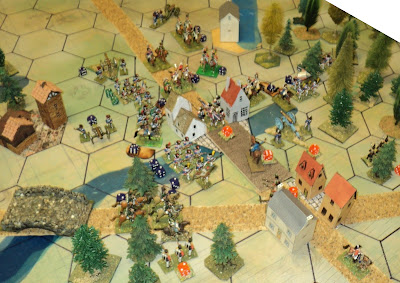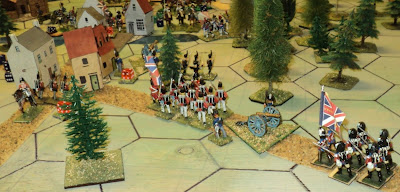Gazelle-class
The surviving six ships of the Gazelle-class were retained by the Reichsmarine.
Bremen-class
Two of the surviving ships of the Bremen-class were retained by the Reichsmarine.
The surviving six ships of the Gazelle-class were retained by the Reichsmarine.
When built, the Gazelle-class’s characteristics were:The Gazelle-class as built.
- Displacement: 2,706 tons
- Dimensions:
- Length: 344ft 6in (105m)
- Beam: 40ft 8in (12.4m)
- Draught: 17ft 6in (5.38m)
- Propulsion: 2 triple-expansion steam engines, both of which drove a propeller
- Speed: 21.5 knots
- Range: 4,400 nautical miles
- Complement: 14 officers and 256 enlisted men
- Armament: 10 x 4.1in (105mm) SK L/40 guns (10 x 1) and 2 × 17.7in (450mm) torpedo tubes (2 x 1)
- Armor: Deck: 0.8in to 1in (20mm to 25mm)
Service histories
Arcona had been converted into was a minelayer capable of carrying 200 mines in 1911/12, and was acting as a coastal defence ship when the First World War ended. She served with the fleet from 1921 to 1923, and after a period laid up, she was stricken in 1931 and used as an accommodation ship at Wilhelmshaven, Swinemunde, and Kiel. In 1942 she was converted into a floating AA battery (Flak ship), and was armed with 5 x 4.1in (105mm) AA guns, 2 x 37mm AA guns, and 4 x 20mm AA guns. (This armament was later increased.) She was scuttled on 3rd May 1945 and finally scrapped between finally scrapped in 1948/49.
Medusa had had her armament reduced to 6 x 4.1in (105mm) guns in 1916 whilst she acted as a tender to SMS Konig Wilhem. She served with the fleet from 1920 to 1924, and after a period laid up, she was stricken in 1927 and used as an accommodation ship at Wilehlmshaven. In 1942 she was converted into a floating AA battery (Flak ship), and was armed with 5 x 4.1in (105mm) AA guns, 2 x 37mm AA guns, and 4 x 20mm AA guns. (This armament was later increased.) She was scuttled on 3rd May 1945 and finally scrapped between 1948 and 1950.
Arcona and Medusa as rebuilt for service as Flak ships.
Amazone had been disarmed in 1916, and served as an accommodation ship in Kiel until she was rearmed and refitted in 1921/23 at Wilhelmshaven for service with the fleet. Her ram bow was replaced by raked bow, which improved and modernised her appearance. She was stricken in 1931, and became an accommodation ship in Kiel. After the war she was used to house displaced persons. She was finally scrapped in Hamburg in 1954.
Thetis had been rearmed with more modern guns in 1917 to serve as a gunnery training ship. She was stricken in 1929 and scrapped in Hamburg in 1930.
Nymphe had been disarmed by 1916 and was serving as an accommodation and drill ship in Kiel. She was rearmed and refitted in 1923/24 at Wilhelmshaven for service with the fleet. Like Amazone, her former ram bow was replaced by a raked bow. She was stricken in 1931 and scrapped in Hamburg in 1932.
Niobe had been disarmed by 1916 and was serving as an accommodation and headquarters ship at Wilhelmshaven. In 1925 she was stricken, and sold to Yugoslavia. She was rebuilt, rearmed, and renamed Dalmacija, and served with the Yugoslav Navy until she was captured by the Italians. She was renamed Cattaro, but when Italy capitulated, she was taken over by the Kriegsmarine and renamed Niobe. On 22nd December 1943 she was torpedoed in the Adriatic by Royal Navy MTBs, and subsequently sank.
Dalmacija (the former German Niobe) was extensively rebuilt so that she could be used as a training cruiser by the Yugoslav Navy. She was captured by the Italians after the invasion of Yugoslavia, and renamed Cattaro (the Italian name for Kotor). When the Italians capitulated, she was seized by the Germans ... who renamed her Niobe.
Bremen-class
Two of the surviving ships of the Bremen-class were retained by the Reichsmarine.
When built, the Bremen-class’s characteristics were:The Bremen-class as built.
- Displacement: 3,737 tons
- Dimensions:
- Length: 364ft 6in (111.1m)
- Beam: 43ft 8in (13.3m)
- Draught: 18ft 2in (5.53m)
- Propulsion: 2 triple-expansion steam engines, both of which drove a propeller
- Speed: 22 knots
- Range: 4,270 nautical miles
- Complement: 14 officers and 274 enlisted men
- Armament: 10 x 4.1in (105mm) SK L/40 guns (10 x 1) and 2 × 17.7in (450mm) torpedo tubes (2 x 1)
- Armor: Deck: 3.1in (80mm)
Service histories
Hamburg served as an accommodation ship in Wilhelmshaven for the Flag Officer, Submarines until the end of the First World War. In 1925 – after being laid up since the end of the war – she was refitted and rearmed with 8 x 4.1in (105mm) (8 x 1) and 2 × 21in (533mm) torpedo tubes (2 x 1) for fleet service. She served as a training cruiser from 1926 to 1927 before being stricken in 1931. She again became an accommodation ship for submarine crews, this time in Kiel. In 1944 she moved to Hamburg, where she was bombed and sunk. She was later raised and scrapped in 1956.
Berlin served at Jutland but 1917 she has been reassigned to duty as a coastal defence ship. In 1921/23 – after being laid up since the end of the war – she was rebuilt at Wilhelmshaven with a new raked bow in place of her original ram bow, refitted, and rearmed with 8 x 4.1in (105mm) (8 x 1) and 2 × 19.7in (500mm) torpedo tubes (2 x 1) for fleet service. She served as a training cruiser from 1923 to 1927 before being stricken in 1935. She then served as an accommodation ship at Kiel until the end of the Second World War, and in 1947 she was loaded was loaded with chemical weapons and scuttled in the Skagerrak.



































































.jpeg)

















